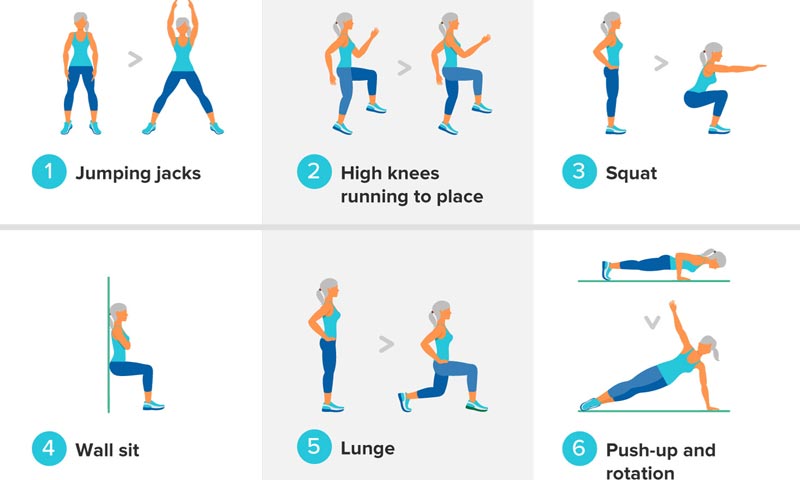https://www.maxpixel.net/Track-Athlete-Stadium-Sports-Field-Running-3819653
There is a personal achievement to running and completing a marathon. Regardless of your reason for choosing to run a marathon, these reasons will become your motivation during your preparation when the weather is nasty, or your legs are tired. In this
This article is not about the basics of running; there are lots of blog posts about that online. This article provides you with adequate knowledge of how to adequately prepare for your marathon.
Read on…
Taking it step by step
Before starting your long distance training program,
· Consult your physician. It is vital that you prepare your body before running
· Be specific about your goals or needs for running. Do you want to lose a specific amount of weight? Do you want a way to exercise despite your busy schedule? Are you choosing it as an economical option rather than a health club membership?
· Run a constant base mileage for at least 24 weeks
If you build your weekly mileage too soon and too fast, you are likely to be injured.
An excellent way to prepare for your first marathon (physically and mentally), run a few short races such as 5ks and 10ks.
Marathon Training Chunks:
A) Develop your mileage for each week
Before you can achieve success in any long-distance event, it is crucial that you build up a weekly mileage. Start building your weekly mileage 12 to 20 weeks before the marathon event. Aim for 50 miles before the race day.
Perform at least three runs per week, performing most of them at a pace such that you can hold a conversation.
Then, increase your weekly mileage by no more than 10 percent per week.
For the best results, you need to balance building your weekly mileage with increasing the speed at which you run them.
To avoid injury, I suggest you stop building your mileage after reaching 60 weekly miles.
B) Running Long is One Vital Key to a Successful Marathon Run
Next, you need to learn how to run long. Once you start running long consistently, you are ready to perform at any long distance run. A simple and effective method to run long is to extend your long run by at least two miles per week every ten days. But to avoid risking anybody injury, scale back every three weeks.
For instance, you can run 10 miles one weekend, 11 miles the next weekend, 14 miles the weekend after, then, 12 miles after that before changing to 15 the weekend after.
When you run at this interval of pace, you will not only build your confidence, but your body will start adjusting to long distance, and your body will start learning how to burn fat to energize your body.
Though it is typical for your body to peak at 20 miles during your long, your body can utilize its peak condition to run an extra 6 miles on race day.
C) Adding speed work can make you a better runner
If you seek a faster performance in the races you enter and your daily training runs, you have to develop a carefully designed faster-paced run.
Though speed work is usually recommended for advanced runners, it can improve your aerobic capabilities and simplify your runs.
Before including speed work in your training schedule, you should consistently run between 20 and 25 miles per week at least 24 weeks before entering any long distance run. If you have never practiced speed work, you need the right and up-to-date knowledge from credible sources to train smart. If you intend to integrate speed work into your training program:
· Don’t schedule a speedwork session after a long run
· Schedule your speed training session after a leg rest day or during the week after an easy run
If your speed training session is within a group, run at a pace that suits your ability. By performing a workout developed for another person, you become more susceptible to injury.
Proper warm-ups and cool-downs are vital for avoiding any injury.
Dedicate a maximum of 15 percent of your total weekly mileage to fast-paced running. Also, you shouldn’t exceed 800 meters of fast-paced running per week.
During summer months, schedule your speed workouts for evenings or early mornings. Thus, you avoid the most humid and hottest times of the day. Otherwise, you become susceptible to heat illness.
Also, time your meals properly. If you intend to perform a fast-paced run in the evenings, don’t eat a big lunch.
D) What they don’t tell you about muscle recovery
Schedule days for complete rest – no running at all. Thus, you avoid mental burnout, and your muscles can recover adequately.
If you wish to perform any activity of your rest days, your best option is some cross-training. Your cross-training shouldn’t involve any high-impact running. It can be lifting weights, yoga, swimming, cycling, hiking or walking.
Pro Tip: Three weeks before your marathon race, scale back on your total mileage significantly. It will ease the difficulty in your runs, and your body can have adequate rest before the race day.
Natural energy boosters are arguably the best foods you can eat on your rest days. Shilajit as an energy-boosting food reduces physical weakness, improves your stamina, and it is a powerful energizer. It contains Fulvic acid; Fulvic acid contains trace elements, amino acids, and various minerals. Apart from being useful for rest and recovery purposes, Shilajit has other health benefits.
Keeping your body fresh and re-energized during the run
Keeping your body fresh
Though most marathons contain stations for water and aid, you should still carry some water. However, you should get accustomed to holding a hydration pack by training with it before the race day.
Here are three proven ways to train without water or aid stations:
· Place water bottles on your route the night before your run
· Ensure your route passes through water fountains
· Take long runs on a short loop. Thus, you can identify the spot(s) to stash water
Re-energizing during the run
“Bonking” or “hitting the wall” is a common phenomenon among marathoners which they experience when they reach the 20-mile mark.
There is a limit to the amount of glycogen your body can store as a primary energy source during the marathon. Throughout the marathon, your glycogen level starts reducing. Thus, you start feeling heavy because your muscles start getting tired. To avoid a complete glycogen depletion or “hitting the wall”, consume small amounts of carbohydrates.
The easiest to carry and digest carbohydrates are energy gels, chews, an energy bar or a few pieces of fruit. You can expect to consume almost 60 grams of carbs per hour for a 2-hour run. The key to success with using various fuel types is to test them during your pieces of training and determine which of them can provide you with optimum results.





